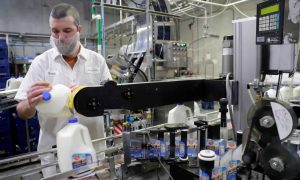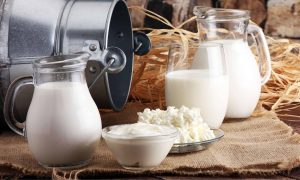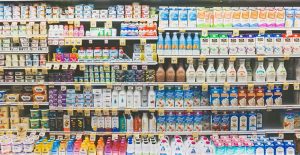
“We had a little bit of a flourish in fluid milk sales during 2020 when we were safer at home and we tended to buy an extra gallon of milk,” said Mark Stephenson, director of dairy policy at University of Wisconsin.

“As we got out of the home and back to restaurants, fluid milk sales have continued on their decline path,” said Stephenson during the Hoard’s Dairyman webinar.
“One of the biggest categories that is increasing has been other cheeses where we’ve gone from 14 pounds of cheese consumption per person in 1975 up to 38 pounds of cheese consumption per person,” he said. “That’s been a bright star to the dairy industry.”
Yogurt consumption last year was a growth category.
“Yogurt consumption has been slowing down over the last decade and butter has also been a growth category and it was last year, as well,” Stephenson said.
From January to March 2020, U.S. cow numbers increased from year-earlier levels.
“But in March we had too much milk because plants weren’t able to sell product to restaurant chains and farms culled dairy cows,” Stephenson said. “Then we had a national response from programs like Farm to Family Food boxes that moved dairy products through give away of food, prices buoyed and cow numbers started to move back up toward the end of the year.”
Dairy cow numbers peaked in May 2021.
“There were 9.5 million dairy cows and we hadn’t seen that many dairy cows in the U.S. herd for a quarter of a century,” Stephenson said.
“But as the year went along we started to have problems keeping that many dairy cows in the national herd because the margins were pretty thin,” he said. “Although milk prices were good, feed costs were high and we saw exits of herds, even large dairy herds in the West and Southwest in a way that we haven’t seen in quite a long time.”
With typical seasonal patterns, milk per cow peaks in April or May.
“It peaked in March and then cows produced less milk per cow until we had a price signal for stronger milk supply,” Stephenson said.
“In the past, if you’re doing something that’s taking the top off the lactation curve, you can’t get that back until the next lactation. We see now with better feeding and farm management, that has allowed farms to be able to pivot much more quickly than before,” he said.
“In June we had an increase in milk per cow that was persistent until recently and milk per cow since August is no higher than it was a year ago, largely due to the high feed costs.”
It is normal for U.S. milk production to increase 1% to 2% a year, Stephenson said, to meet the increasing demand for dairy products.
“In November, milk production was below year earlier levels and that is not something we see very often,” he said. “So, milk supplies domestically are fairly tight right now.”
Since about 2005, the trend for U.S. dairy exports has been increasing.
“We are exporting 17.5% of our milk solids and export demand has been strong on all of our dairy products,” Stephenson said. “Butterfat had a pretty big uptick in 2021. Same thing is true for cheese. Skim and nonfat milk powders had a pretty big increase, as well as whey products.”
Customers for U.S. dairy products have increased.
“One of the notable countries is China that was a pretty big increase in 2020 and 2021,” Stephenson said. “Exports have been brisk to Mexico, they are increasing to South America and Korea and they have been strong the last couple of years to Southeast Asia.”
New Zealand and the European Union are generally larger exports of dairy products than the United States.
“We come in third place right now and Australia and Argentina are also major exporters,” Stephenson said.
All of the major dairy exporting countries currently have a tight milk supply, Stephenson said.
“The world has been demanding dairy products, but most of the major milk producing countries that export dairy products are not able to keep pace,” he said. “We’re drawing on our stocks and we’re signaling that with higher prices in world markets.”
There has been some friction with dairy exports including the port congestion since most U.S. dairy products are shipped in containers.
“The shipping container cost to move from Los Angles to Shanghai had been about $3,000 per container, but that increased to as much as $20,000,” Stephenson said.
“It’s somewhat better now, with the cost about $12,000 per container, but I think we’ll see some port congestion for maybe as much as the next two to three years. It’s not just a dairy supply chain problem — it’s the shipping of all products moving from country to country.”
Another friction is the value of the dollar because a strong dollar means it takes more value in other currencies to buy U.S. products.
“Since mid-2021, the dollar has been strengthening, which is not a problem we can’t overcome,” Stephenson said. “It does mean the value of products have to be competitive to export with a strong dollar.”
Stephenson is looking for an increase in U.S. milk prices for 2022.
“I think we’ll have a $22 all milk price on average and we may have some bumps that cause volatility,” he said. “Last year we had an average all milk price of $19, so the price this year should be $2 to $2.50 above last year, which is a good milk price as long as your costs of production are not that high.”
Although the dairy policy director expects a good year for milk prices in 2022, he advised dairymen to utilize risk management strategies.
“Put a floor under price opportunities when they present themselves and always look to control variable costs of production,” he said.

























